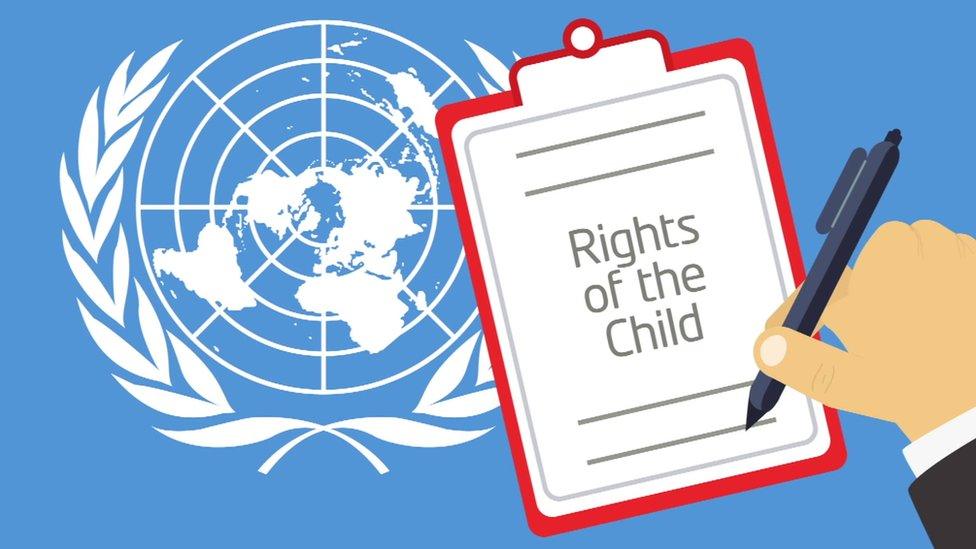Convention on the Rights of the Child: Statement included by children
- Published
- comments

A new set of rules to protect children online are being added to the United Nations Convention on the Rights of the Child.
Their aim is to help to protect children's right to privacy, freedom of expression and information in the digital world, and have been co-written by a group of young people.
The UN Convention on the Rights of the Child is a very important written promise by world leaders, that says they will protect children's rights and make sure that all children have a safe and happy life.
The Convention was first written in 1989 - the same year that the internet was invented - and so the people who wrote it had no idea how much of an impact digital technology would have on young people's lives more than 30 years later.
These updated new rules aim to educate and hold the government and businesses to account when making decisions that will affect children online.
What is the UN Convention on the Rights of the Child?
What is the Convention on the Rights of the Child?
On 20 November 1989 world leaders got together and made a promise to every child to protect their rights and make sure they have a safe and happy life.
They put together a legally-binding international agreement called the United Nations Convention on the Rights of the Child (UNCRC).
The treaty says that every child has rights, whatever their ethnicity, gender, religion, language or abilities.
To date, world leaders from 196 countries have signed the treaty, including the UK, India and Canada.
The United States signed the treaty in 1995 which means it agreed to it, but did not take it through the next step which would mean it is legally bound by it.
The UNCRC is made up of 54 articles that set out children's rights and how governments should work together to make them available to all children.
These include the right to:
Life, survival and development. Governments must do all they can to help a child survive.
Health
Protection from violence, abuse or neglect
An education
Express their opinions and be listened to
Children are better off now than they were thirty years ago, in part because of the treaty.
However, there is still much more that needs to be done, for example there are 58 million children worldwide who still don't go to school. There are still children who have to work and children who get sick from diseases which could have been prevented.
What are the new rights about the digital world?
The new addition to the UNCRC is officially called: "general comment No. 25 (2021) on children's rights in relation to the digital environment".
It says that children around the world use the internet for things like schoolwork, entertainment, to get information and to keep in touch with families and friends, and that it should be a fair and safe place for young people.
Here are the four key principles:
Children must be protected from discrimination, and treated fairly whoever they are.
Children must be supported to grow up into what they want to be without harmful interference.
When making any decision, adults - including governments and businesses - must do what is best for children rather than themselves.
Children have opinions that must be taken into account in all the things they care about.
How will these new rules work?
The new rules also come with guidance for how to protect children's rights online by:
Making rules that support children's rights online.
Ensuring that everyone understands the rules, including government officials, businesses, parents, teachers and children themselves.
Listening to children when they have a problem.
Stopping businesses putting profit above children's rights.
Making sure that there are consequences for organisations or people who break the rules.
Making sure children know and understand what action has been taken.
- Published5 September 2017
- Published23 March 2021
- Published21 November 2019
